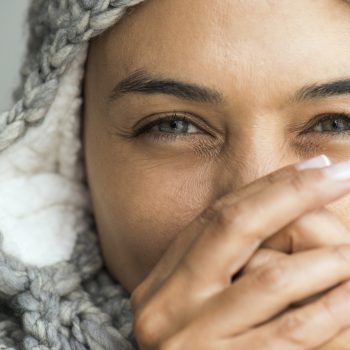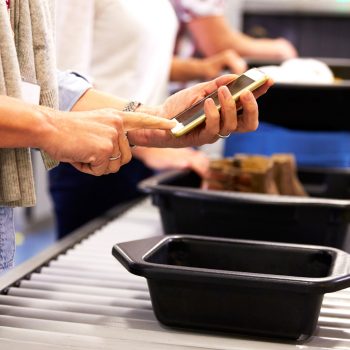How can you protect yourself from the most common diseases during the winter season? How can you avoid the spread of colds, flu, bronchitis, pneumonia? How much time do you need to spend at home before you can return to social environments? How should we regulate ourselves to avoid exposing ourselves or the people around us to the risk of being infected? We talk about this with Andrea Carlo Lonati, a medical hygienist in the health care department of Humanitas.
How does the contagion work?
Infection involves the entry into the body of pathogens that can be of bacterial, viral, fungal or protozoal origin. This contamination (infection) can result in a latent or confirmed state of the disease and during its course the infectious agents can escape from the body and constitute a source of contagion for other individuals. It is always useful to involve the general practitioner in the diagnosis and possible setting up of an appropriate therapeutic pathway. The following indications are suitable for adults who are generally in good health, otherwise the advice is to always consult your doctor.
In any case, in the event that you are ill, it is advisable to protect the people around you, especially those with a weaker immune system, avoiding exposing them to pathogens: in the event of a visit to a hospitalized patient, coordinate with the ward staff who can tell you how to wash your hands and wear, if appropriate, a mask.
Risk of infection and rest
The risk of infection depends on the efficiency of our immune system, age, the type of microorganism responsible for the disease, any previous contact with the pathogen and exposure to smoke.
Resting at home is almost always the best ally for recovery, especially in cases of colds and flu where the treatment is mainly symptomatic. It is the doctor of confidence, evaluating the specific case, who can suggest the most appropriate rest period and therapy.
How to protect yourself (and others)
Sore throat. Most sore throats are viral, but sometimes they can be sustained by bacteria (e.g. streptococcus) or they can be mixed (bacterial overinfection on previous viral infection). In this case, a visit to the general practitioner – who will decide to deepen the clinical evaluation with a possible pharyngeal swab – may clarify the presence of bacteria for which it is recommended to take antibiotics, which can help to avoid complications and which should always be taken under strict medical supervision.
Bronchitis, typically viral, is one of the most common diseases in late autumn and winter, along with other respiratory infections, pneumonia is not seasonal. This respiratory infection can occur throughout the year because the lungs are constantly exposed to microbes and particulate matter that can increase susceptibility to infection.
Influenza is contagious from the first 48 hours to 10 days. The disease spreads through coughing and sneezing. To avoid contagion, it is necessary to stay at home until the symptoms improve and the fever resolves. Hygiene is important: hands should be washed often with soap and water or water-based hand sanitizers. The general practitioner can assist you in both treatment and prevention (flu vaccine).
Gastroenteritis to viral etiology. It is contagious from the first 24-48 hours and up to 48-72 hours after the symptoms have disappeared. The virus is usually very contagious (it is present all year round but with peaks during the cold months) and spreads with the sharing of food, utensils, contaminated surfaces, with close contact. In this case, in addition to personal hygiene, the cleaning of the rooms and the disinfection of potentially contaminated surfaces are fundamental. Also in this case the general practitioner can assist you with the treatment by suggesting or prescribing any symptomatic drugs and behavioural advice, such as light diet and hydration.
Cold. The period in which you are infected lasts between 48 and 72 hours and can continue for up to 2 weeks. The disease mainly spreads through contact with hands contaminated with respiratory secretions or airborne droplets and helps prevent its spread by staying at home until the symptoms improve and the fever resolves. It is important to wash your hands often with water and soap or water-alcohol-based hand sanitizers. In the case of a cold, treatment is mainly aimed at reducing symptoms. In case of worsening or excessive duration of symptoms, contact your general practitioner.
Sore throat. The peak of infection occurs during the first 48-72 hours and can last up to 4 weeks (especially if not treated with antibiotics in case of bacterial infection). A sore throat resulting from a bacterial streptococcus infection should be treated immediately with a proper antibiotic therapy and stops being contagious only until 24 or 48 hours after the start of therapy: for this reason it is important to go to the general practitioner, especially if the symptoms persist for a few days. The disease spreads with droplets of saliva or mucus and nasal secretions. It is therefore better to avoid close contact with others and not to share utensils and drinks, remembering to wash your hands often reaching your wrists, even with hydroalcoholic solution, brushing your nails and insisting in the folds between your fingers.
Bronchitis. In the first 48-72 hours it is more contagious. The possibility of transmission can last for 3 weeks and passes through the droplets of saliva dispersed in the air and on contaminated surfaces. How can I avoid infecting others? Hand cleansing is also important in this case – reaching the wrists with soap and water or with a water-alcohol solution, brushing the nails and insisting between the fingers, as is facial cleansing. In case of bronchitis, consult the general practitioner for the setting up of a proper therapy.
Pneumonia. You are most contagious within the first 48-72 hours and up to 3 weeks. How does the disease spread? Through coughing and sneezing. Hygiene, hand cleaning and environmental disinfection are essential to prevent infection. In the case of pneumonia, it is essential to involve the general practitioner who, on the basis of the objective examination and the clinic, will establish the most appropriate therapy, generally based on antibiotics and drugs for the treatment of symptoms, and possibly recommend in-depth diagnostic-instrumental studies.








